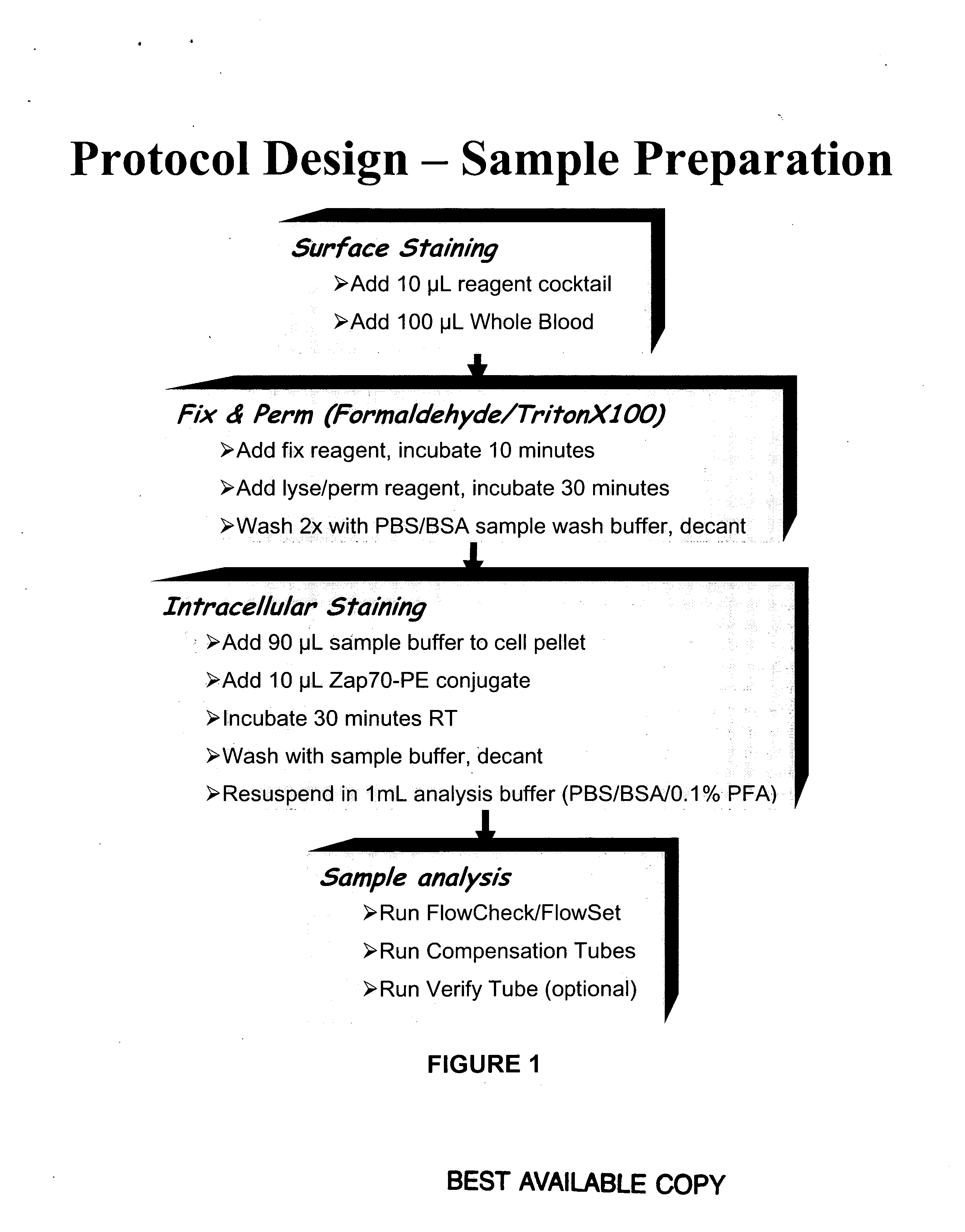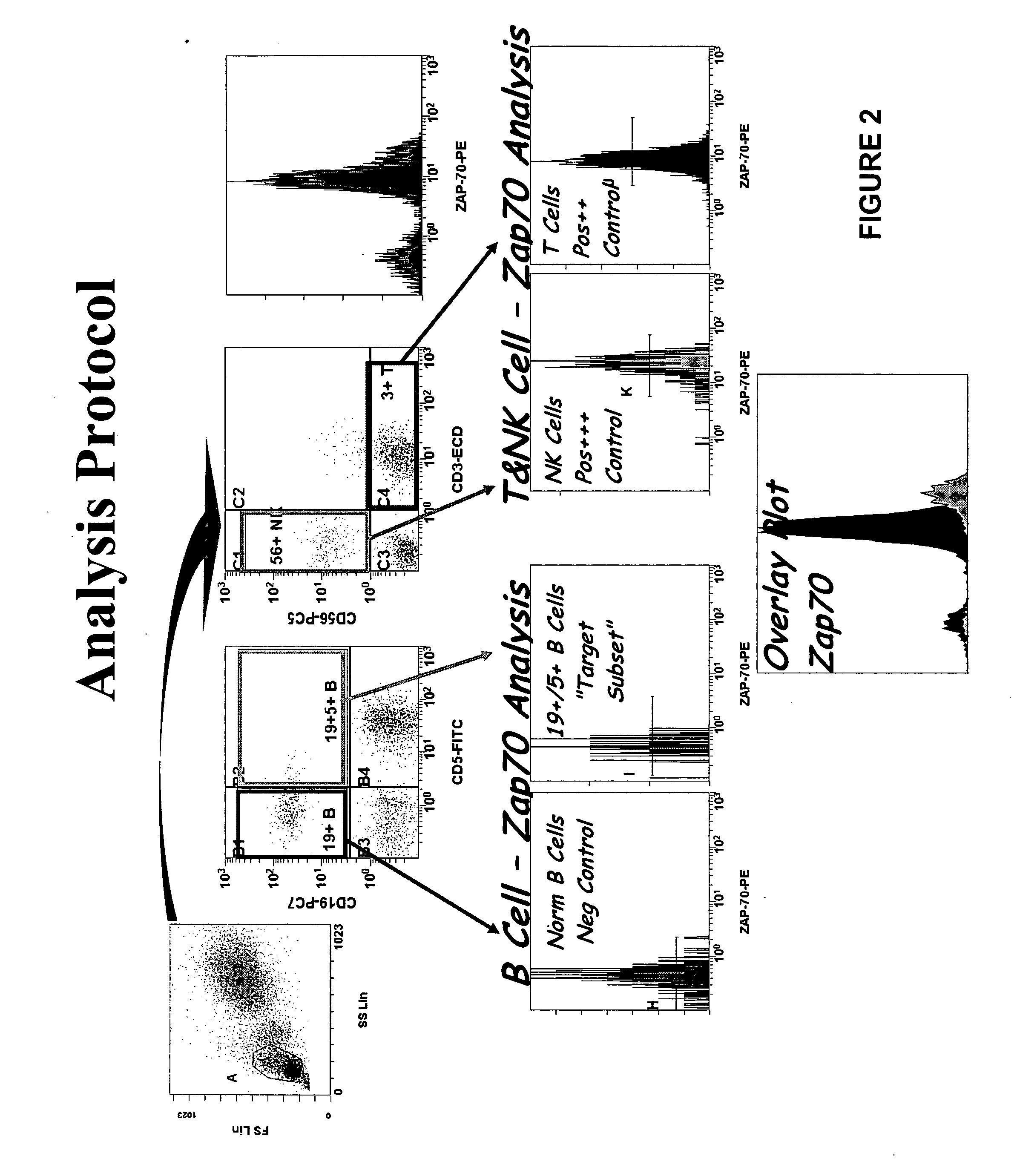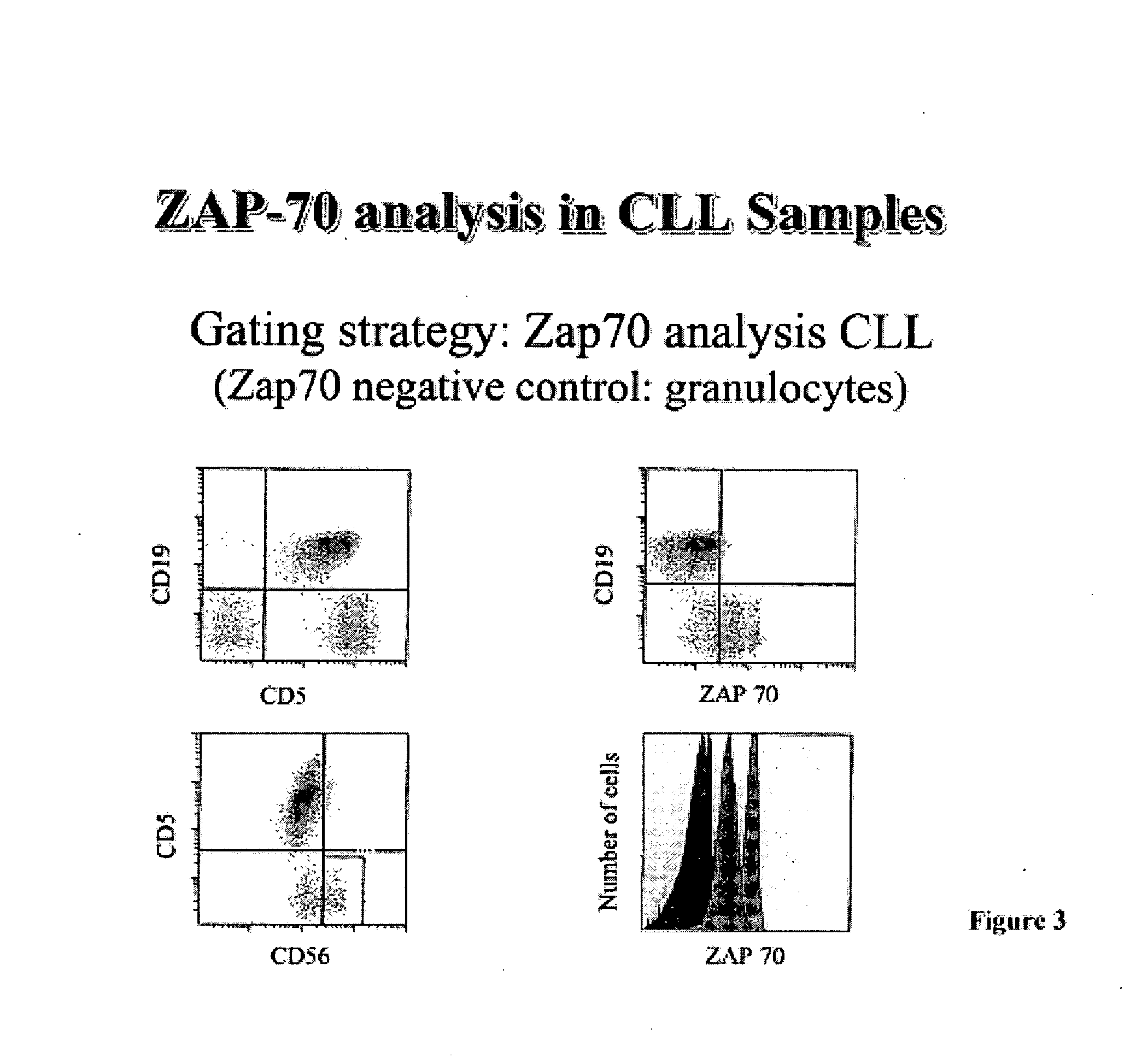Composite profiles of cell antigens and target signal transduction proteins for analysis and clinical management of hematologic cancers
a technology of hematologic cancer and target signal transduction protein, which is applied in the direction of instruments, tumor/cancer cells, blood/immune system cells, etc., can solve the problems of rapid death, reduced production and function of normal blood cells, and complex treatment of leukemia, so as to improve the risk of recurrence and determine the prognosis of an individual
- Summary
- Abstract
- Description
- Claims
- Application Information
AI Technical Summary
Benefits of technology
Problems solved by technology
Method used
Image
Examples
example i
Preparation of Samples for Establishing Composite Profile
[0086] This Example shows preparation of a sample for establishing a composite profile for an individual suspected of having having B-Cell Chronic Lymphocytic Leukemia (B-CLL).
[0087] Briefly, 10 μl of a reagent mix containing the cell surface markers CD5-FITC, plus CD3-ECD, plus CD56-PC5, plus CD19-PC7 was placed in a tube and 100 μl of whole blood were added. After a 20 minute incubation at room temperature, 64 μl of fixative (10% formaldehyde) were added followed by incubation at room temp for 10 minutes. Next, 1 ml of lyse / perm reagent (0.1% Triton X-100) was added, followed by incubation for 30 minutes at room temperature and subsequent centrifugation. The cells were then washed twice with buffer (PBS with 2% BSA), resuspended in 10 μl anti-ZAP-70-PE plus 90 μl buffer, incubated at room temp for 30 min, then washed once with buffer, and resuspended in buffer containing 0.1% paraformaldehyde. The sample is then analysed o...
example ii
Analysis of Sample for Establishing Composite Profile
[0088] This example shows analysis of the sample by flow cytometry to establish a composite profile.
[0089] As shown in FIG. 2, a composite profile was established using a ZAP-70 gating / analysis algorithm as follows: The first gate of a normal whole blood sample identifies lymphocytes (blue plus green) by light scatter in the upper left histogram. If desired, CD45 versus side scatter (linear scale) can be used to set gates around CD45-bright lymphocytes in peripheral blood for CD4 enumeration, and CD45 versus side scatter (log scale) can be used to identify blast populations in bone marrow for phenotyping. In FIG. 2, the CD19 versus CD5 histogram identifies normal B-cells (purple, upper left quadrant), normal T-cells (blue, lower right) and normal peripheral blood “pre” B-cells (CD19+5+, upper right quadrant). The B-CLL neoplastic cells also fall in the upper right quadrant, but contrary to their normal counterpart, the B-CLL neo...
PUM
 Login to View More
Login to View More Abstract
Description
Claims
Application Information
 Login to View More
Login to View More - R&D
- Intellectual Property
- Life Sciences
- Materials
- Tech Scout
- Unparalleled Data Quality
- Higher Quality Content
- 60% Fewer Hallucinations
Browse by: Latest US Patents, China's latest patents, Technical Efficacy Thesaurus, Application Domain, Technology Topic, Popular Technical Reports.
© 2025 PatSnap. All rights reserved.Legal|Privacy policy|Modern Slavery Act Transparency Statement|Sitemap|About US| Contact US: help@patsnap.com



